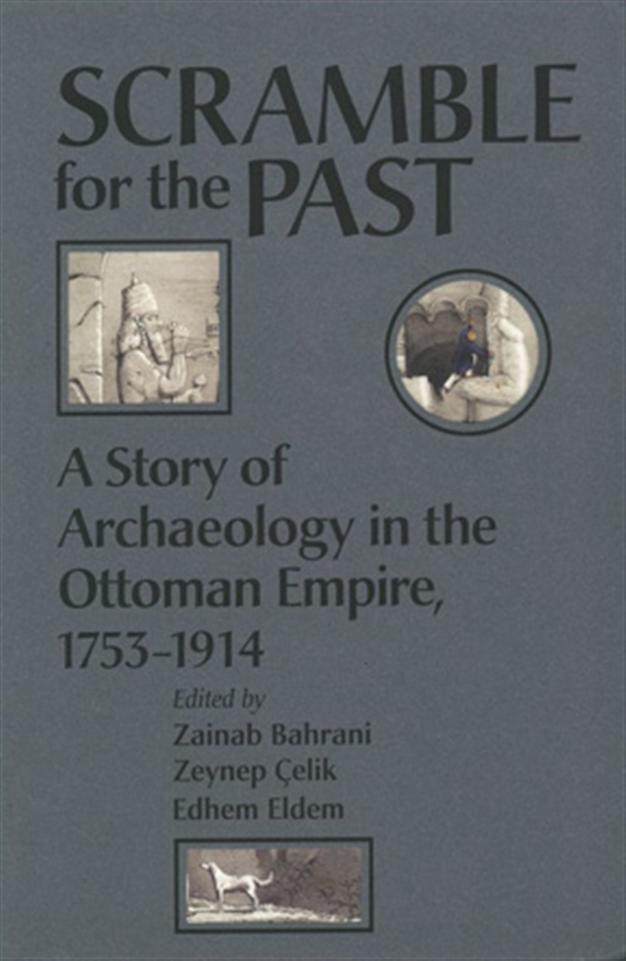Scramble for the Past: A Story of Archaeology in the Ottoman Empire
William Armstrong - william.armstrong@hdn.com.tr
 ‘Scramble for the Past: A Story of Archaeology in the Ottoman Empire, 1753-1914’ edited by Zainab Bahrani, Zeynep Çelik, Edhem Eldem (SALT, 2011, 80TL, pp 520)
‘Scramble for the Past: A Story of Archaeology in the Ottoman Empire, 1753-1914’ edited by Zainab Bahrani, Zeynep Çelik, Edhem Eldem (SALT, 2011, 80TL, pp 520)Turkey’s Culture Ministry has recently been leading an aggressive and very public drive to reclaim antiquities that it says were looted from Ottoman and Turkish lands by Western archaeologists. The campaign, described by Andrew Finkel as “a matter of national pride,” is a neat demonstration of how our interpretation of items from the ancient past is inextricable from political determinants. Indeed, the scientific archaeology that first emerged as a distinct new discipline in the 1700s was never a purely disinterested realm of scholarship, and the acquisition of antiquities very quickly become interdependent with expanding national and imperial interests at the time. Possessing material vestiges of the past has always allowed states to lay claim ownership of the idea that they represent - civilization itself - and the Turkish Culture Ministry’s recent repatriation campaign is simply the latest manifestation of this impulse.
The object of this beautifully illustrated volume of scholarly essays is to explore the archeological enterprise in Ottoman lands from the mid-18th to the early 20th century, with diverse contributions from a range of foreign and local voices. It was actually published as an accompaniment to an exhibition of the same title at Istanbul’s SALT Galata gallery last year, but it’s probably more accurate to say that relatively modest exhibition was rather an accompaniment to this rich and weighty tome.
Unearthed in the 19th century, the Venus de Milo is one of the items that most clearly illustrates archeology’s inextricability from politics. A brilliantly distilled essay here by Philippe Jockey describes how this essentially unremarkable Ancient Greek statue of ordinary workmanship was inflated by the French almost exclusively out of hard-nosed political considerations. Discovered on the Aegean island of Milos in 1820, Jockey explains how the Venus de Milo’s “aesthetic qualities alone would never have engaged the passions of more than a few specialists. Rather, the statue was discovered at the right moment and by the right people … Simply put, the Venus de Milo was and remains today, more than any other artwork of antiquity, a mirror of the international relations of the times.” Immediately sent back to the Louvre for display, the Venus exemplifies how the “scramble for the past” (a title echoing the imperial “Scramble for Africa”) was not only a competition for material objects to fill newly established European museums, but “also a rivalry among nations at the height of European geopolitical interests in the east.”
The Ottomans were slow to realize the political significance of archeology and the potential value of the antiquities held within their empire, despite the fact that acquisitive Westerners had been pilfering them for many years. Actually, it was this lack of understanding that allowed the Europeans to get away with it for so long, and helped give credence to their claims that they were the true stewards of such important historical items. However, the Ottoman perception of archaeology underwent a slow transformation over the course of its 19th century modernization process. After a period of “blissful ignorance,” the Ottoman authorities took concrete steps to prevent the removal of artifacts from their territory in a series of decrees starting in 1869, which are examined in a detailed essay here by Edhem Eldem. The new Ottoman interest in antiquity was “not unlike that of the Europeans in that the capital of antiquity was necessary for its status as an empire and for its larger political claims.” Tellingly, at around the same time, popular Istanbul periodical Servet-i Fünun revealed the competitive rationale behind the first 1869 decree as follows: “Europeans can now see how the Ottoman state has entered a period of progress … They admit that for the examination of history and fine arts, just as London, Paris, and Rome have each been a center of the treasures of antiquities, Istanbul has also become the same way.” Such was the spirit behind the opening of Istanbul’s Archeology Museum in 1891, intended as the Ottoman answer to the British Museum and the Louvre.
Thus, one of this book’s central points is that integrating into the wider world of western archeology and belatedly joining the “scramble for the past” was a crucial indicator of Turkey’s modernization throughout the 19th century. The Culture Ministry’s recent campaign shows us that national assertion through antiquities is still alive and well, which makes this book not only an enjoyable read, but also a very relevant one.
Notable recent release

‘Directory of World Cinema: Turkey’ edited by Eylem Atakav
(Intellect, $40, pp 320)










